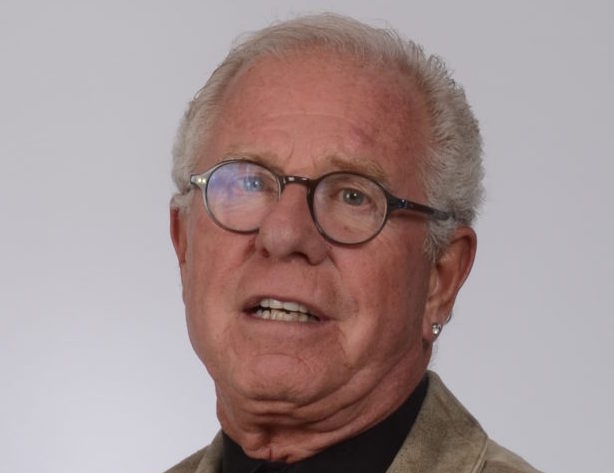
by Peter Boyles | Sep 24, 2021 | Blasting with Boyles
In the last seven mon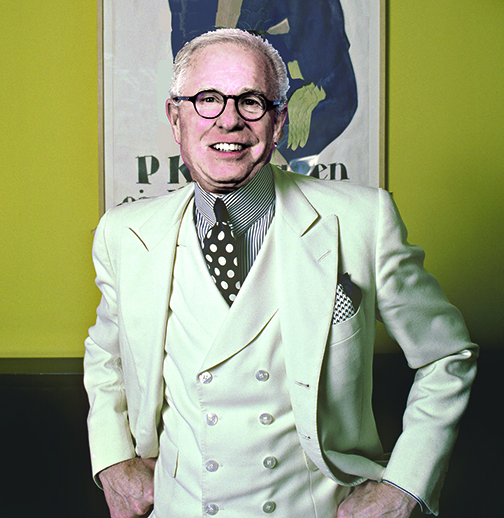 ths of the award-winning radio show career, I’ve been called any or all of the following: a drug addict; an alcoholic; a democrat, ouch that one hurt; homosexual, which given my lifetime of dating straight women might be worth a try; and the worst person in talk radio history in Colorado. Can you think of some people who are getting a break on that one?
ths of the award-winning radio show career, I’ve been called any or all of the following: a drug addict; an alcoholic; a democrat, ouch that one hurt; homosexual, which given my lifetime of dating straight women might be worth a try; and the worst person in talk radio history in Colorado. Can you think of some people who are getting a break on that one?
In the past I have been: the biggest racist in Denver radio, when I began to ask questions about Obama’s life story; a full-blown commie or pro Saddam, when I questioned weapons of mass destruction; destroying the life of a wonderful women i.e., Jon Benet’s mother; and harboring very wealthy men who had sex with women for money in Denver Players and Sugar. So, I’m fairly used to being abused.
But we have now crossed into new territory. This is what historians call new cut road.
I stole the column title from Tom Wolfe. He wrote about the Pump House Gang and Kool-Aid Acid Test.
So today to be a talk show host in Denver, especially working at the station I work at, you have to have the following pedigree. Number one, Donald Trump won and this whole thing has been stolen. Number two, Donald Trump won and this whole thing has been stolen. Number three, Donald Trump won, etc.
And if you don’t qualify, you can’t play. The facts somewhat speak for themselves. The Pump House Gang gathered in Pueblo to begin to destroy themselves one more time.
They overwhelmingly rejected the idea of opting out of the open primary and then voted to sue themselves over something they had already agreed on. Can you find the elephants and giraffes in that picture?
Folks. We must stop the people who want to bring you heroin injection sites, schools without defense, i.e., armed security guards. We have to stop the craziness of the homeless plight, the state being run by developers and bond daddies, banks, and other fat cats.
A line must be held and, believe me when I tell you, you won’t believe the stuff that’s coming down now. The party hacks have to face the Kool-Aid test. Did Donald Trump win or lose. That question will be asked by media, by their opponents in the Democrat party. If they say yes, Donald Trump lost, their throats will be torn out by the werewolves in the GOP. If they say no, their throats will be torn out by the vampires in the Democrats.
Halloween is coming. To the Democrats and the GOP: trick or treat, smell my feet, give me something good to eat. To rational thinkers everywhere, we’re doomed. But ski season starts soon. Go Broncos.
— Peter Boyles
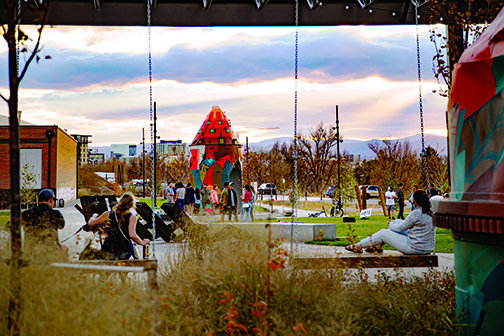
by Mark Smiley | Aug 27, 2021 | General Featured
by Jessica Hughes
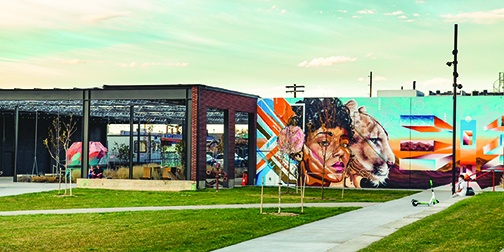
Colorful Murals at the RiNo Artpark. Photo credit: Scott Colby
A new arts center is coming to Denver’s RiNo neighborhood this month. The grand opening for the RiNo ArtPark will be held the weekend of September 24-26. Designed to be a creative hub in the Five Points neighborhood, the ArtPark will seek to spark innovation and bring people together through the arts.
What was once operated by the Denver Police Department, the original building was scheduled for demolition. The RiNo Art District advocated to save the buildings and turn them into something the community could use. Partnering with the Denver Public Library, Focus Points Family Resource Center, and RedLine Contemporary Art Center, the RiNo ArtPark will feature a community hub for resident artists and education programs and a new branch of the Denver Public Library for the entire community to enjoy.
Another unique feature of the park is the Comal Heritage Food Incubator, a culinary training program for immigrants and refugees interested in restaurant entrepreneurship. The program is currently running under the Focus Points Family Resource Center and will expand its presence at the hub.
Beyond the physical structures of the park, its design explores the intersections of nature, recreation, and culture by combining green spaces that engage the South Platte River and the surrounding natural areas.
RiNo ArtPark Grand Opening

Outdoor space at RiNo ArtPark capturing the Denver skyline. Photo credit: Scott Colby
The entire Denver community is invited to the Grand Opening of ArtPark. Throughout the weekend, visitors will have an opportunity to tour the new Tres Birds-designed ArtPark building, attend workshops, demonstrations, art activations, and see live music, exhibits, performances, and more.
In addition to a host of FREE family-friendly events throughout the weekend, RiNo Art District will host the Lawn Salon, a ticketed fundraising event to support ongoing programming at ArtPark. This year’s outdoor bash is a twisted picnic, a one-of-a-kind “lawn salon” experience, with interactive art, a giant flaming disco ball, music curated by local DJs, live and silent auctions, dinner, drinks, and fun surprises.
Events
Friday, September 24:
FREE Open House 3-7 p.m.
ArtPark Public Art Dedication Ceremony: 3 p.m.
The dedication ceremony welcomes the newest public artworks into the Denver’s collection! Artists Jaime Molina and Pedro Barrios, with the help from Tres Birds Workshop, will unveil their latest works at this dedication ceremony — three old industrial cement mixers have been transformed into sculptural additions to the park.
Saturday, September 25:
FREE Youth Activities: 10 a.m.-2 p.m.
On Saturday, friends and family will enjoy a book sale, hosted by the Denver Public Library, a yoga art class, paper flower making, pinata class, and a live performance by Los Mocohetes. The Lawn Salon fundraiser will also be held on Saturday, from 6 to 9 p.m.
Sunday, September 26:
FREE Family Celebration 10 a.m.-2 p.m.
On Sunday, free events will include ArtPark Al Fresco Art Workshops, paper marbling classes, yarn bombing classes, the book sale, and fun activities such as the bubble tower and bounce house. Food trucks are scheduled to be there from 10 a.m. to 2 p.m.
Events throughout the weekend will be held in and around ArtPark, located at 35th and Arkins Court, Denver, 80205. Events are FREE all weekend except for the Lawn Salon Fundraiser on Saturday.
To learn more about the RiNo ArtPark and to purchase tickets to the Lawn Salon, visit them at rinoartpark.com.
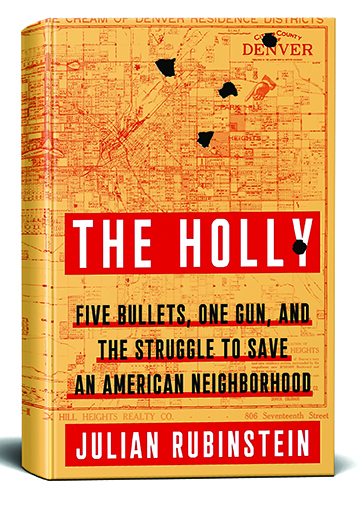
by Regan Bervar | Aug 27, 2021 | Editorials
“Courage is grace under pressure.” Ernest Hemmingway
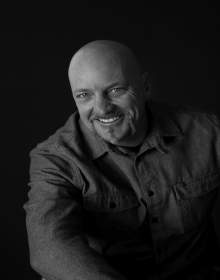 by Luke Schmaltz
by Luke Schmaltz
Not since the heyday of Gonzo Journalism has a Colorado writer immersed themselves in a story to such a degree, they become temporarily synonymous with the subject of their investigation.
This level of dedication explains why author Julian Rubinstein is laying low. Because for now — he is responsible for introducing oblivious residents of the Mile High City and the world at large to “Invisible Denver.”

Book: The Holly, an epic saga about “Invisible Denver,” is available at julianrubinstein.com.
Rubinstein recently published a book titled The Holly — a factual, multi-generational account of people, events, and places in and around a specific sector of Northeast Denver. This residential and commercial district is home to a variety of small businesses, community centers, a library, post office, the Center for African American Health, and more, Holly Square is also the site of countless gang-related incidents and deadly encounters over the last 30+ years.
A Work In Progress
The area is well known for conflict between Denver gangs and the DPD. Yet, Holly Square also bears the fruits of the efforts of former gangster-turned activist Terrance Roberts and various philanthropists and community outreach groups. On the surface, there is evidence of an influx of big money bolstering new development such as the Nancy P. Anschutz Center/Boys & Girls Club which opened in 2013. This has a seemingly synergistic effect on long-established neighborhood institutions, namely the shops and businesses in the Park Hill Center. On a deeper level, however, linger the ghosts of a community long-affected by civic dysfunction and gang warfare.
The Promised Land
Beginning in the 1950s, Rubinstein reports, this area was the Plymouth Rock of a migrating African American populace fleeing the Jim Crow South in search of a better life. Among them was Terrence Roberts’ grandmother, Ernestine Boyd, who was soon followed by most of her immediate family — whom she managed to move to Denver one by one from an Arkansas cotton plantation. “Most people don’t associate Denver with having much of an African American population or culture,” Rubinstein begins. “But of course, there is a very strong one that begins very early,” he explains. The Holly is the de facto epicenter of what Rubinstein’s book reveals as “Invisible Denver” a subculture extending across multiple neighborhoods that most folks beyond the zip codes therein are unaware of.
The Story That Hit Home
The germ for The Holly was planted in 2013, when a national news piece caught Rubinstein’s attention (a Denver native) while he was living in New York City. It involved former Bloods gang member-turned anti-gang activist Terrance Roberts, who was involved in a shooting incident in Holly Square that nearly claimed the life of then-active Bloods gang member Hasan Jones.
Over the next seven years, Rubinstein would immerse himself in the subculture of The Holly. “I didn’t know what I was going to find, and I didn’t expect to find what I did,” he explains. “It ended up feeling like a responsibility that I didn’t always want.” The book is an opus driven by equal amounts journalistic curiosity, humanist compassion, and nerves of pure steel. He documents in great detail how he was able to gradually befriend Roberts, Roberts’ father George (a funeral preacher), and an extended network of characters who don’t normally associate with Caucasian journalists.
Dysfunction Junction
Perhaps the most disturbing set of circumstances Rubinstein uncovers are those demonstrating the monumental failure of Denver law enforcement to address and reverse the ongoing crisis of gang violence. His reporting reveals that active gang members were recruited by city-appointed officials and placed on payroll to perform “outreach” to the community’s at-risk youth. “For much of the time I felt like I was doing government oversight work,” Rubinstein explains. Rubinstein refers to this as the “urban war industrial complex,” and he demonstrates that as certain government-sponsored “anti-gang” programs were implemented, the violence only increased.
Internal Perspectives, Conflicting Opinions

Author: Julian Rubinstein is a Denver native who was compelled to return home and uncover the truth about “Invisible Denver.”
Rubinstein’s story presents a comprehensive, multi-generational account of local African American history, gang culture, activism, anti-activism, and urban development. Folks who want to get to know “Invisible Denver” can start by reading The Holly.
Like many journalists, Rubinstein is not without detractors. One such figure is Jeff S. Fard — founder of Brother Jeff’s Cultural Center, and a well-known figure in the Northeast Denver community. He is a lecturer, multimedia journalist, and community organizer. He is also a regular guest on a local radio show hosted by longtime Denver on-air personality Peter Boyles.
Brother Jeff’s outspoken criticism of Rubinstein on Boyles’ 710 AM KNUS radio show has brought more than a few questions to the fore. When asked about his ire toward Rubinstein’s reporting in The Holly, he replied with a litany of misreported facts such as incorrect ages, school attendance statuses, and gang affiliations, and more. Brother Jeff attests, “ If these basic facts are not correct, how much can larger facts be trusted?”
Infractions, Minor And Otherwise
Rubinstein has taken note of these oversights, and vows to correct them in future editions. “Well, thankfully these are minor infractions,” he explains.

Brother Jeff: While Brother Jeff credits Rubinstein with making some good points, he has far more critical bones to pick with The Holly.
Brother Jeff has bigger fish to fry. “Initially, I thought The Holly was a product of journalism and reporting,” he states. “It only took me a few pages … to realize the book is more of Terrance Roberts’ story as told to Julian Rubinstein. I have many questions for Julian. For example, does Roberts receive any royalty payments from the book? Was he paid? If so, that departs from any journalistic effort I am familiar with. I have been around Roberts long enough to hear his voice and tone in much of The Holly.
Brother Jeff continues his invective, “Flames burned down The Holly, and now, the opening of unresolved issues and wounds are tearing the community apart again. In fact, after 400 pages most walk about asking, what is that book all about?”
One of Rubinstein’s main revelations in The Holly is evidence of police corruption. Specifically, in the claims that active gang members are recruited by DPD and other official agencies to, ironically, work in the capacity of anti-gang outreach for at-risk youth. Rubinstein cites numerous sources and instances to support this claim, yet Brother Jeff has a different story to tell concerning this issue.
An Ongoing Debate
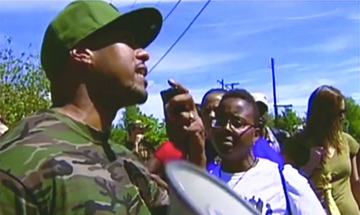
Focus: Terrance Roberts, seen here rallying for the community, is the primary focus of The Holly.
When asked about police corruption, as reported in The Holly, Brother Jeff states, “Initially, community and city collaborations regarding youth were done through a program known as Safe City. Mayor Webb placed this within the Manager of Safety office. That office is more than the police. It is Sheriff, fire, and even the Independent Monitor. Later GRID and Safe City kinda merged and Safe City became Safety Programs. This work is also under the Manager of Safety. I don’t know too much about police recruiting anyone from community based programs,” he explains. “They may have recruited confidential informants etc…, but no one I know would know anything about that.”
Meanwhile, Rubinstein denies having a partnership with Roberts, and is quick to defend his revelations about misappropriation of government funds for anti-gang, community outreach. “Because Brother Jeff didn’t hear of any DOJ funding doesn’t mean it wasn’t there,” he explains.
As with most polarized issues, the complaints are many and the grudges run deep — indicating the disputes arising from The Holly will smolder on. Which, alas, may help make Invisible Denver not so invisible.
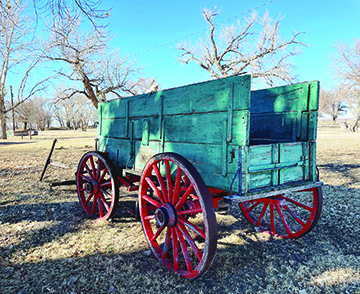
by Jessica Hughes | Aug 27, 2021 | Main Articles
by Jessica Hughes

Wagon: A wagon reminiscent of those used on the trail. Located at Boggsville Historic Site. Photo by Jessica Hughes
The Santa Fe Trail was an overland two-way trade route that connected Franklin, Missouri, with Santa Fe, New Mexico. The portion of the trail that ran through Colorado was called the Mountain Branch section. This year marks the bicentennial of the Santa Fe Trail that ran through Colorado between 1821 and 1890. For the anniversary, there are several events and things to do to help commemorate this historic occasion.
Hosted by National Park Service partners and the Santa Fe Trail 200 organization, the bicentennial celebration will feature more than 40 in-person and virtual events throughout the length of the trail, from Missouri to New Mexico, with several planned in Colorado.
Bent’s Old Fort In La Junta
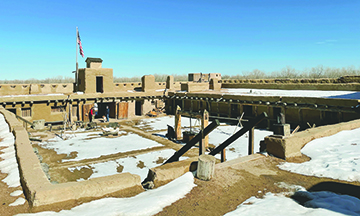
Bent’s Old Fort: Looking inside Bent’s Old Fort near La Junta. Photo credit: Jessica Hughes
The keystone event for the 200-year celebration of the Santa Fe Trail will be held in La Junta at Bent’s Old Fort. This historic fort was an important stopping point along the trail where travelers came to rest and resupply. To highlight the fort’s significant role it played along the trail, they will be hosting the Santa Fe Trail Symposium, September 23-26, 2021.
Throughout the weekend, the event will showcase speakers, entertainment, and tours. Visitors can also participate in historian-narrated bus tours and living history events, including re-enactors at Bent’s Old Fort. Symposium activities are also planned at the Koshare Indian Museum, Otero Junior College, and the Otero County Museum.
Visit 2021sfts.com to view the entire schedule of events.
Trinidad
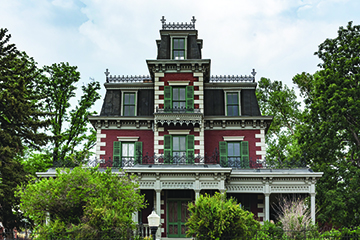
Bloom House: The historic Bloom House is part of the Trinidad History Museum. Photo credit: Jessica Hughes
Come to Trinidad for a week-long celebration of the Santa Fe Trail. Events and activities will be held September 27 – October 3, 2021, commemorating the development of American trade, cultural interactions, and the westward expansion that were all a result of this historic byway. The celebration will include historic tours of the trail and the Santa Fe Museum, period reenactments, historic family-friendly activities, theatre productions, art exhibits, and more.
Visit the Trinidad History Museum to view the featured exhibit of Borderlands of Southern Colorado: The Santa Fe Trail. The exhibit, housed in the Santa Fe Trail building, explores the trail through new eyes by telling forgotten stories that shaped the borderlands of southern Colorado. The property also houses the historic Bloom Mansion, the Baca-Bloom Heritage Gardens, and the Baca House, where tours are available.
Drive The Santa Fe Trail

Marker: One of 36 Santa Fe Trail markers in Las Animas, Colorado. Photo by Jessica Hughes
One of the best ways to experience the trail is with a drive along the historic Mountain Branch of the Santa Fe Trail. The route roughly follows U.S. Highway 50 from Lamar to La Junta, and along U.S. Highway 350 to Trinidad, going into New Mexico. Visit historic landmarks along the way including Bent’s Old Fort, Boggsville Historic Site, Fort Lyon, Bent’s New Fort, Timpas State Station, the Baca House in Trinidad, and more.
Be on the lookout for the wagon ruts that are still visible in some places along the grass prairies. Much of the historic trail has faded away, so numerous signs are posted alongside the road to notify motorists where the trail once was. In fact, there are now 36 historic granite stone markers that follow the route, most of them denoting visible wagon ruts. Notable markers are found in Lamar at the Big Timbers Museum, north side of U.S. Highway 50 at the Kansas/Colorado state lines, and at Iron Springs along Highway 350.
For more information about the bicentennial of the Santa Fe Trail, visit https://santafetrail200.org.

 ths of the award-winning radio show career, I’ve been called any or all of the following: a drug addict; an alcoholic; a democrat, ouch that one hurt; homosexual, which given my lifetime of dating straight women might be worth a try; and the worst person in talk radio history in Colorado. Can you think of some people who are getting a break on that one?
ths of the award-winning radio show career, I’ve been called any or all of the following: a drug addict; an alcoholic; a democrat, ouch that one hurt; homosexual, which given my lifetime of dating straight women might be worth a try; and the worst person in talk radio history in Colorado. Can you think of some people who are getting a break on that one?










